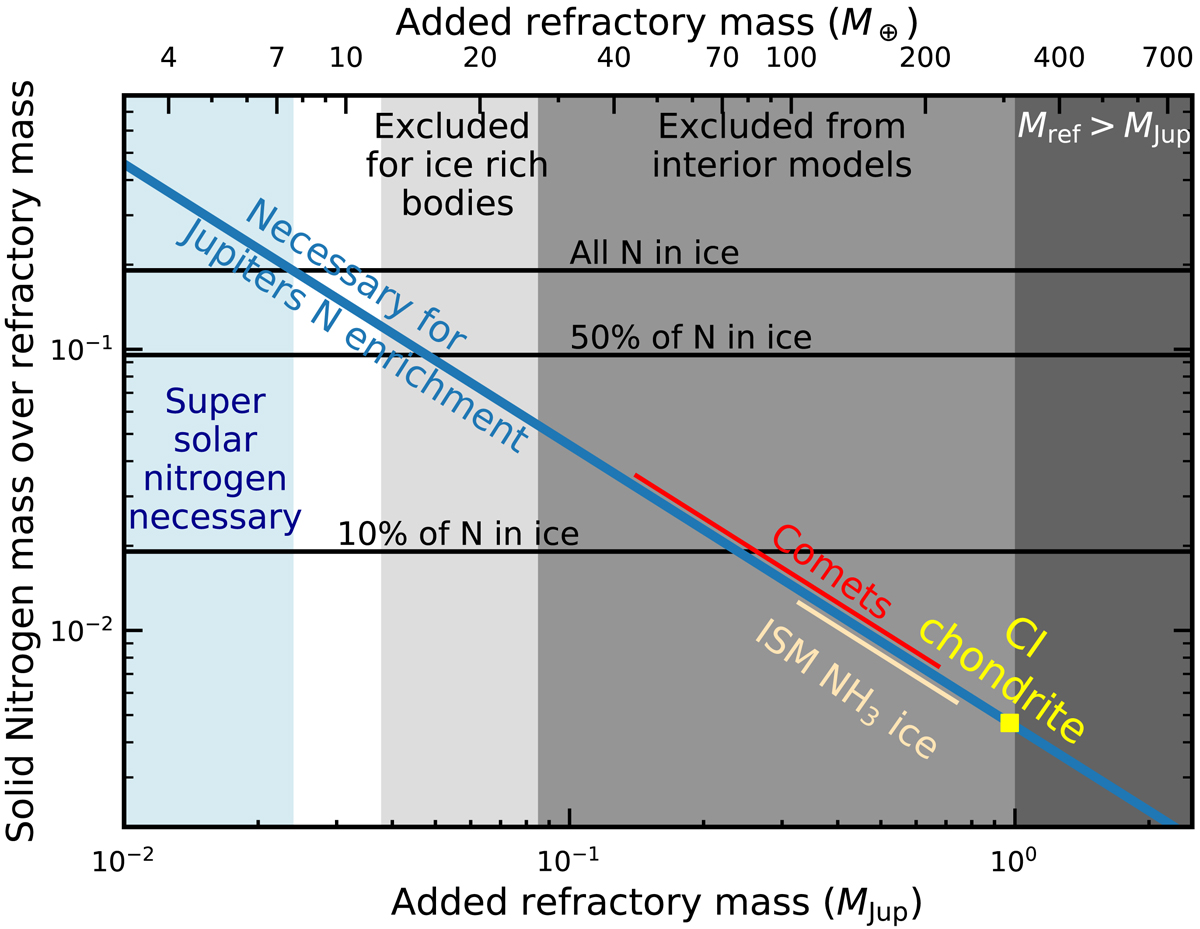Fig. 2.

Nitrogen-to-refractory mass ratio of enriching solids necessary to reach Jupiter’s Nitrogen content as a function of total refractory mass added to Jupiter. It is assumed that Jupiter has accreted solar composition gas and that the excess nitrogen was brought in frozen on solids. The upper limit to the total heavy element mass is taken to be 27 M⊕ (Wahl et al. 2017). This can be in the form of ice-poor or ice-rich bodies; for ice-poor bodies the refractory mass is assumed to be the total mass of heavy elements, for ice-rich bodies, assuming H2O and CO are frozen out, as would be expected for a very N2-rich body, the heavy element mass is around two times the refractory mass, meaning that only ∼12 M⊕ of refractories can be accreted. The nitrogen-to-refractory mass ratios of ISM grains without N2 ice (Boogert et al. 2015), comets (Altwegg et al. 2019), or CI chondrites (Lodders et al. 2009) have been added for comparison. None of these have a high-enough nitrogen fraction to enhance Jupiter’s atmosphere.
Current usage metrics show cumulative count of Article Views (full-text article views including HTML views, PDF and ePub downloads, according to the available data) and Abstracts Views on Vision4Press platform.
Data correspond to usage on the plateform after 2015. The current usage metrics is available 48-96 hours after online publication and is updated daily on week days.
Initial download of the metrics may take a while.


